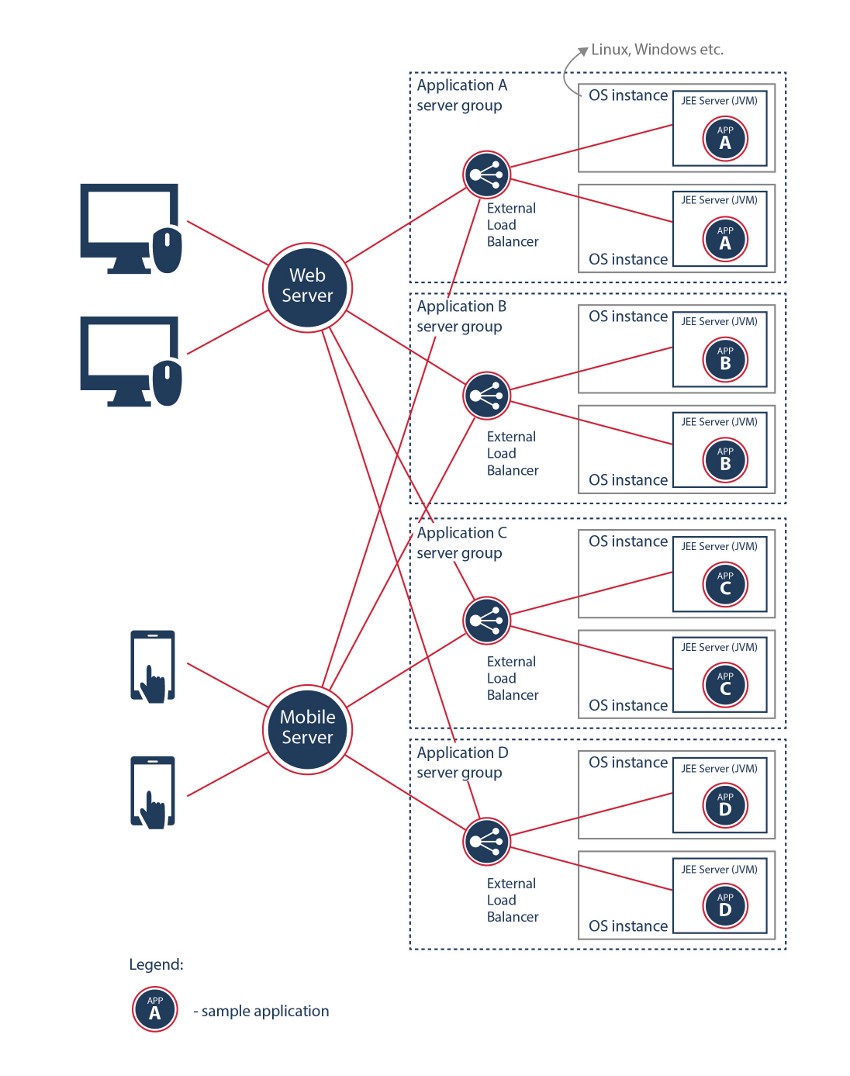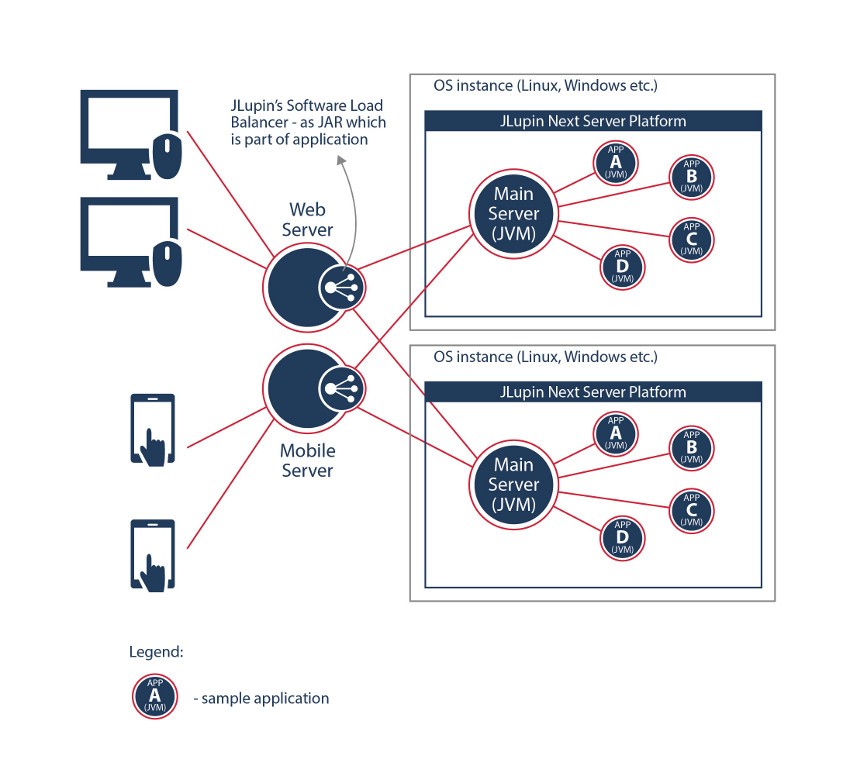JLupin Next Server at first glance
The JEE infrastructure has now a new administration solution – JLupin Next Server. It offers a different approach to application implementation. What does it offer?
Existing solutions used for implementation of the JEE application are limited. With the new way of application management, JLupin Next Server breaks down all barriers.
JEE’s blazed trails
Good practices show that the safety of an application is ensured by at least two servers (physical or virtual). Moreover, each application has an assigned LoadBalancer, which distributes traffic between servers on which this application is duplicated. This explains the work flow when uploading new versions.
Another standard followed by administrators recommends uploading each application to a separate application server. This allows avoiding problems associated with applications influencing each other. They include memory leaks caused by unequal demand for memory in particular applications, blocking shared system resources or the already mentioned complications with updates.
Costs of habits
Each JEE application administrator knows the benefits of good practices. He has probably got used to their disadvantages. It is therefore important to realize what the price for relative security and stability of the standard JEE infrastructure is.
Let us take an example. If a company has 10 branches, each of which wants to develop its own application, the company needs a minimum of 20 application servers and 10 LoadBalancers. This creates a complex infrastructure and its management is quite of a challenge. Any changes to the infrastructure are associated with high risk. It is not difficult here make a mistake in the configuration of both LoadBalancer, and the client’s application.
How does the application implementation in the infrastructure look like? Laboriously. If continuity of the application functioning is to be maintained, some of the servers have to be disconnected from LoadBalancer, a new version must be uploaded, and only after the application is fully launched they can be reconnected. This process must be repeated until it covers all servers. Additionally, hours during which traffic is the lowest are selected for critical applications.
How does JLupin react?
JLupin Next Server – less to gain more
JLupin Next Server is the first server for JAVA-based applications, in which each application is a separate JVM process with its own memory allocation and thread pool. Therefore, it is possible to run multiple applications that do not affect each other on one server. Let us go back to the example. The company is using JLupin for ten applications and it only needs two servers. The configuration of such a network is simplified because the main process of JLupin Next Server manages the configuration for each application itself. The JLupin Next Server solution is also in favour of simplifying the infrastructure as LoadBalancers are used as libraries on the client’s side.
The implementation of the new version of the application becomes much simpler and does not limit its availability. JLupin Next Server disables the old version of the application after new one is fully implemented and all requests are properly handled. With this feature the implementation of critical applications can take place even with the most severe traffic.
How does the development process on JLupin Next Server look like? Due to the fact that applications on JLNS are spring-based, a basic knowledge of this framework is all you need. Then, the developed JAR for your application must be placed in the application directory on the server. JLupin Next Server will run it as a separate JVM process and automatically create access paths for the classes using the following interfaces – SOAP – XML, HTTP – JSON, JAVA REMOTE OBJECT INVOCATION – SYNCHRONOUS, ASYNCHRONOUS (QUEUES)
The use of JLupin Next Server requires the smaller infrastructure to be configured, while providing a greater opportunity for the company to develop. More advantages and details can be found at www.jlupin.com and in next articles.
One application on one server architecture. Comparison of applications using JEE servers (Scheme 1) to JLupin Next Server platform (Scheme 2) – see diagrams below:







